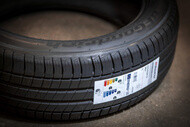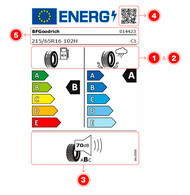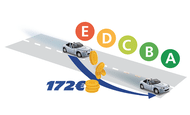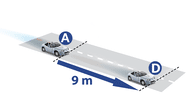(1) Based on savings of 150 litres of fuel over a distance of 40,000 km at 1.15£ per litre (weighted average). The effect may change depending on the vehicle and driving conditions. Performance measured in accordance with the test method set in the regulation UN ECE R117.
(2) Performance of braking from 80 km/h to 20 km/h, measured in accordance with the test method set in the regulation UN ECE R117.
(3) Noise is measured on a vehicle travelling at 80 km/h with the engine switched off, measured in accordance with the test method set in the regulation UN ECE R117.
(4) Brake efficiency test under winter conditions according to the ETRTO method (European Tyre and Rim Technical Organisation).
(5) Average difference in the braking distance of a winter tyre compared to a summer tyre. Braking distance on a snowy surface from 50 to 0 km/h. TÜV SÜD 2013 tests, on 205/55 R16, conducted at -5°C.
(6) Performance of braking on ice from 20 km/h to 5 km/h, measured in accordance with the test method set in the ISO Norm 19447.












